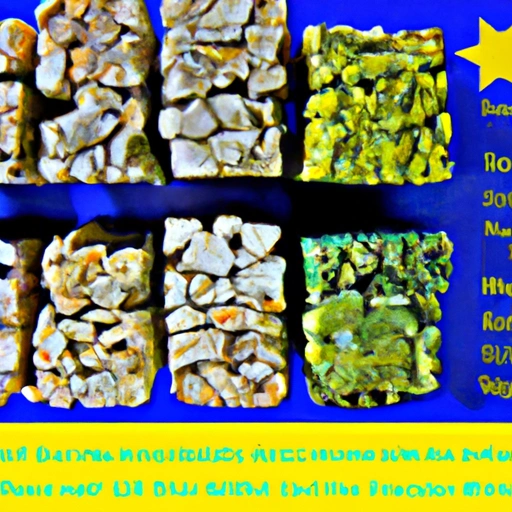Vegetable Bouillon
Description

Vegetable bouillon is a versatile and convenient food ingredient used to impart a rich, savory flavor to a variety of dishes. It is typically found in the form of cubes, granules, or powder and can be easily dissolved in hot water to create a broth-like base. Vegetable bouillon is made by dehydrating vegetables, herbs, and spices, and often includes ingredients like onions, carrots, celery, salt, and sometimes MSG or yeast extract for an umami flavor. It is a staple in pantries around the world, providing an instant flavor boost to recipes without the need for lengthy preparation.
Common uses
Vegetable bouillon is commonly used to create a flavorful liquid base for soups, stews, and sauces. It can also be used to cook grains like rice or quinoa, to steam vegetables, or to add depth to gravies and marinades. Its versatility extends to various cuisines, including but not limited to, vegetarian and vegan cooking, where it serves as an alternative to meat-based broths.
Nutritional value
Calories
Vegetable bouillon is low in calories, with a single cube or teaspoon (about 4-5 grams) typically containing around 10-30 calories, depending on the brand and ingredients used.
Protein
Protein content in vegetable bouillon is minimal, often less than 1 gram per serving.
Fat
Most vegetable bouillons are low in fat, with many brands offering fat-free options. The fat content, when present, is usually less than 1 gram per serving.
Carbohydrates
Carbohydrate content in vegetable bouillon can vary, but it generally contains between 1-2 grams of carbohydrates per serving, mostly from the dehydrated vegetables and seasonings.
Vitamins
While the dehydration process may reduce the vitamin content, some vegetable bouillons may still provide small amounts of vitamins, particularly those derived from the concentrated vegetable content.
Minerals
Vegetable bouillon can be a source of minerals such as potassium and sodium. The sodium content can be significant, as salt is a common ingredient for flavor and preservation.
Health benefits
Vegetable bouillon can contribute to hydration when consumed as a warm broth and may provide trace nutrients from the dehydrated vegetables. It's also a low-calorie way to enhance the taste of foods without adding significant amounts of fat or sugar.
Potential risks
The high sodium content in some vegetable bouillon products can pose health risks for individuals with hypertension or a need to monitor sodium intake. Additionally, some bouillons may contain MSG or other additives that can cause adverse reactions in sensitive individuals.
Common recipes
Common recipes using vegetable bouillon include vegetable soups, minestrone, risottos, and various sauces. It's also used to enhance the flavor of stews and casseroles.
Cooking methods
Vegetable bouillon is typically dissolved in hot water and added during the cooking process. It can be used to sauté, simmer, or boil ingredients, infusing dishes with a savory flavor.
Pairing with other ingredients
Vegetable bouillon pairs well with legumes, pasta, and rice dishes. It complements the flavors of root vegetables, greens, and can be used in conjunction with fresh herbs and spices for added complexity.
Summary
Vegetable bouillon is a flavorful and convenient ingredient that enhances the taste and richness of many dishes. Its low-calorie profile and potential health benefits make it a popular choice for those looking to add depth to their cooking without excess fat or calories. However, consumers should be mindful of the sodium content and the presence of any additives. With its global pantry staple status, vegetable bouillon continues to be a cherished ingredient in culinary traditions worldwide.